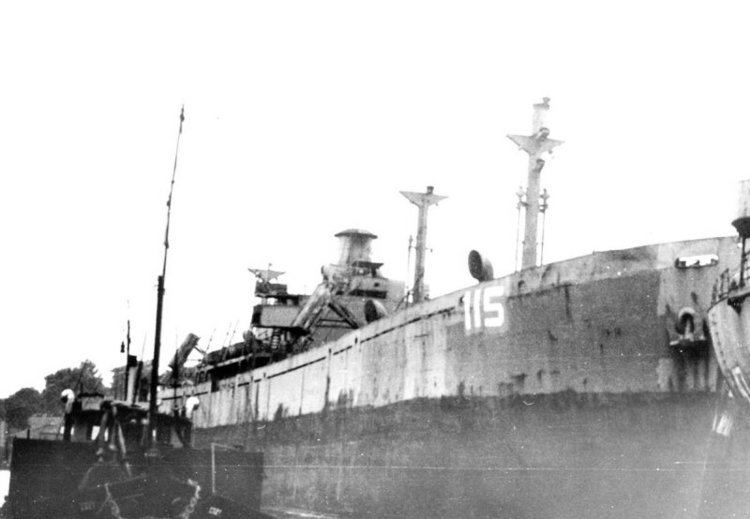Name Peter Stuyvesant
Crux Laid down 27 September 1943 Acquired 27 November 1943 Launched 16 November 1943 | Namesake Peter Stuyvesant
Crux Sponsored by Mrs. F. D. Arthur Construction started 27 September 1943 | |
 | ||
Ordered as a type (EC2-S-C1) hull, MCE hull 1212, SS Peter Stuyvesant Builders St. Johns River Shipbuilding Company, Jacksonville | ||
USS Crux (AK-115) was a Crater-class cargo ship commissioned by the U.S. Navy for service in World War II, named after the constellation Crux. She was responsible for delivering troops, goods and equipment to locations in the war zone.
Contents
Built in Jacksonville, Florida
Crux was launched 16 November 1943 as SS Peter Stuyvesant by St. Johns River Shipbuilding Company, Jacksonville, Florida, under a Maritime Commission contract; sponsored by Mrs. F. D. Arthur; transferred to the Navy 27 November 1943; and commissioned 17 March 1944, Commander C. R. Beyer, USNR, in command.
World War II Pacific Theater operations
Departing Norfolk, Virginia, 4 May 1944, Crux arrived at Espiritu Santo 14 June. From 20 June 1944 to 10 April Crux repeatedly loaded cargo at Brisbane, Australia, for such ports as Milne Bay, Finschhafen, Langemak Bay, Port Moresby, and Hollandia in New Guinea, and Manus, Admiralty Islands.
Her supply base was shifted to Subic Bay, Philippine Islands, in April 1945, and from 16 April to 15 October 1945, she carried cargo from that port to Humboldt Bay, and Mios Woendi, New Guinea, and Nissan Atoll, Bismarck Archipelago. Taking homeward-bound servicemen on board at Manila Bay, Crux sailed 15 November for San Francisco, California, arriving 10 December.
Post-war decommissioning
Crux was decommissioned 31 January 1946 and transferred to the Maritime Commission for disposal the same day.
Military awards and honors
Crux’s crew was eligible for the following campaign medals and ribbons:
